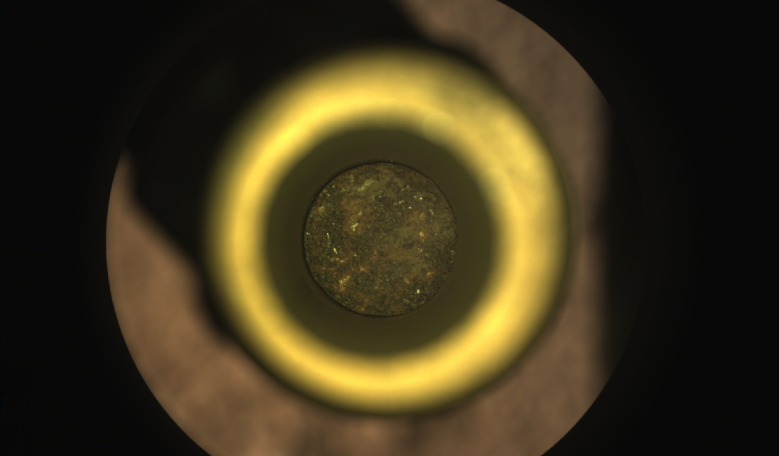NASA’s Perseverance rover has completed an historic milestone by collecting a pencil-thick sample of martian material from a rock at Jezero Crater.
The rock sample was imaged by the rover's instruments and later confirmed by mission controllers at NASA’s Jet Propulsion Laboratory (JPL) in Southern California after receiving the data.
“For all of NASA science, this is truly a historic moment,” said Thomas Zurbuchen, associate administrator for science at NASA Headquarters in Washington.
The successful collection of a rock sample is welcome news to the Perseverance team after a similar attempt last month did not go according to plan.
The rover’s first attempt to gather a sample in early August was foiled when data revealed that although a hole had been drilled into the rocky martian surface, no material had been collected.
After an anxious week of intense investigation, the team concluded that the problem was not the rover, which performed flawlessly, but was with the rock itself as it had been too crumbly to grasp hold of.
To make sure the same did not happen again, this time around, Perseverance targeted a flat, more solid-looking briefcase-sized rock nicknamed “Rochette,” and drilled a hole with its robotic arm.
After mission controllers confirmed the cored rock’s presence in the tube via images sent from the rover’s Mastcam-Z camera, they sent Perseverance a command to complete processing of the sample.
Stored in a tube with serial number 266, the rock sample has now been hermetically sealed and deposited in a storage chamber for retrieval in the future.
“With over 3,000 parts, the Sampling and Caching System is the most complex mechanism ever sent into space,” said Larry D. James, interim director of JPL.
A key objective for Perseverance’s mission on Mars is to be the first of its type to cache Martian rock and regolith ready for collection by a later mission to the Red Planet.
The rover is carrying 43 sample tubes and by the time Perseverance returns to its landing site after its initial science foray, the mobile laboratory will have travelled between 2.5 and 5 kilometers (1.6 and 3.1 miles) and may have filled as many as eight tubes.
After that, Perseverance will head towards the location of its second science campaign: Jezero Crater’s delta region.
The delta is the fan-shaped remains of a place where scientists believe an ancient river met a lake within the crater.
On Earth, locations such as these can be rich in clay minerals and the team are hoping that if such minerals exist in Jezero, they might preserve fossilised signs of biological processes associated with ancient microscopic life, or even the remains of that life itself.
“Getting the first sample under our belt is a huge milestone,” said Perseverance Project Scientist Ken Farley of Caltech. “When we get these samples back on Earth, they are going to tell us a great deal about some of the earliest chapters in the evolution of Mars. But however geologically intriguing the contents of sample tube 266 will be, they won’t tell the complete story of this place. There is a lot of Jezero Crater left to explore, and we will continue our journey in the months and years ahead.”
In the mean time Perseverance will continue to explore an area of rocky outcrops and boulders known as “Artuby”.
This ridgeline of more than 900 metres (half a mile) borders two geologic units believed to contain Jezero Crater’s deepest and most ancient layers of exposed bedrock.
“Our Perseverance team is excited and proud to see the system perform so well on Mars and take the first step for returning samples to Earth”, adds James. “We also recognise that a worldwide team of NASA, industry partners, academia, and international space agencies contributed to and share in this historic success.”











